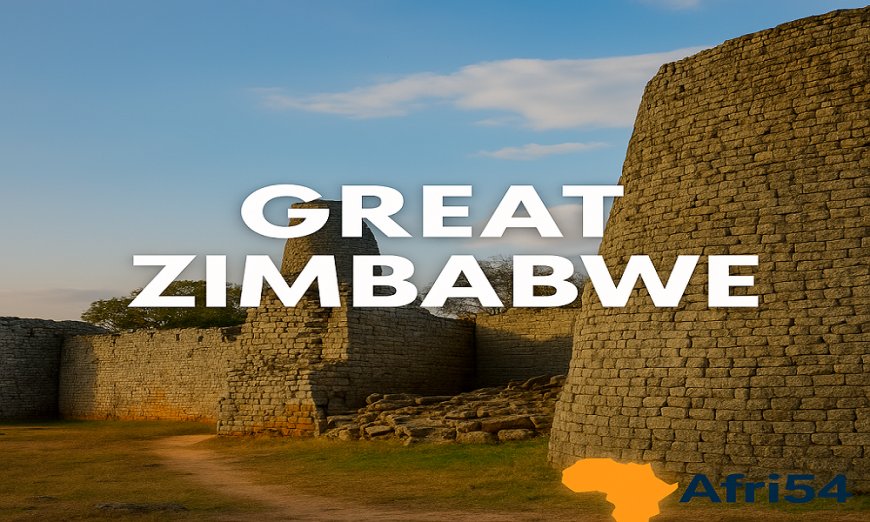Great Zimbabwe: The Medieval Stone City of Africa
Discover the story of Great Zimbabwe, the medieval stone city of Southern Africa. Explore its history, architecture, trade networks, and legacy as one of Africa’s greatest ancient civilizations.

Reading Time: ~6 minutes
When we think of ancient wonders, our minds often jump to the Pyramids of Egypt or the Roman Colosseum. Yet, deep in Southern Africa lies a breathtaking marvel that once stood as the heart of a powerful civilization — Great Zimbabwe.
A City of Stone and Power
Between the 11th and 15th centuries, Great Zimbabwe thrived as the capital of the Kingdom of Zimbabwe. What makes it remarkable is its massive stone architecture, built without mortar. The walls, some stretching over 5 meters high and 250 meters long, still stand today as a testament to African ingenuity.
The word “Zimbabwe” itself comes from the Shona phrase dzimba dza mabwe, meaning houses of stone. It’s no coincidence that the modern nation of Zimbabwe took its name from this historical site — a symbol of pride and identity.
The Center of Trade and Wealth
Great Zimbabwe wasn’t an isolated settlement. It was the economic and political hub of a vast trading empire. Archaeologists have uncovered artifacts from China, Persia, and Arabia, proving that this city was deeply connected to global trade networks. Gold, ivory, and livestock were key exports that flowed through its markets.
Its strategic location between the Zambezi and Limpopo rivers allowed it to flourish as a crossroads for trade, linking the interior of Africa to the Indian Ocean coast.
The Enigmatic Structures
Great Zimbabwe is divided into three main areas:
-
The Hill Complex – believed to have served as a royal enclosure and spiritual center.
-
The Great Enclosure – the most impressive structure, with a 10-meter-high wall encircling a massive courtyard.
-
The Valley Ruins – where ordinary citizens lived, forming a bustling settlement.
The craftsmanship of these structures challenges stereotypes that African civilizations lacked monumental architecture. In fact, Great Zimbabwe remains one of the largest ancient stone constructions south of the Sahara.
Decline and Legacy
By the 15th century, Great Zimbabwe began to decline, possibly due to overpopulation, exhaustion of resources, and shifts in trade routes. However, its legacy lived on through successor states such as the Mutapa Empire.
Today, Great Zimbabwe is recognized as a UNESCO World Heritage Site, attracting historians, archaeologists, and tourists from around the globe.
Why Great Zimbabwe Matters
Great Zimbabwe stands as proof of Africa’s forgotten empires — sophisticated, wealthy, and globally connected. It shatters outdated myths and highlights Africa’s role in world history. For Zimbabweans, it is more than ruins; it is a symbol of resilience, creativity, and national pride.
Final Thoughts
Exploring Great Zimbabwe is like walking through the pages of history. Every stone wall, every pathway, whispers the story of an empire that once dominated Southern Africa. As we uncover more about this ancient city, we are reminded that Africa has always been a cradle of civilization.
Have you listed your business on Afri54?
Afri54 exists to solve a fundamental challenge faced by millions of African businesses: lack of visibility. Whether you’re an automobile part seller in Lagos, a local attire manufacturer in Kigali, a coffee exporter in Addis Ababa, or a mobile phone supplier in Accra, you deserve to be seen. Join Now


















